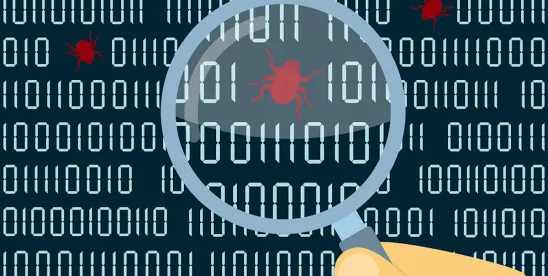Introduction
In a recent judgment, the High Court found Swiss software development company LzLabs and Co-Defendants, including tech billionaire John Jay Moores, liable for breach of contract and unlawful means conspiracy.[1] The case involves allegations of software reverse engineering and breaches of licensing agreements. The court’s judgment not only highlights the complexities of software licensing, but also brings into focus the legal boundaries of interoperability and intellectual property rights.
Background
IBM developed its first mainframe computers in 1950s. These room-sized machines initially ran on vacuum tubes and were some of the very earliest commercially available computers. Today, IBM continues to market mainframe hardware and software descended from these pioneering models, which are relied on by 67% of the Fortune 100 companies. Mainframe systems are designed to reliably and securely process large volumes of information for institutions, running commercial databases, transaction services and customer applications.
On 15 August 2013, IBM entered into a licensing agreement with Winsopia Limited, a subsidiary of LzLabs, under the IBM Customer Agreement (ICA). The agreement allowed Winsopia to use IBM mainframe software, but imposed restrictions on reverse engineering and external distribution. These restrictions were intended to safeguard IBM’s proprietary technology and prevent unauthorised use of its intellectual property.
LzLabs subsequently developed a product known as the Software Defined Mainframe (SDM), the intended purpose of which was to allow IBM mainframe customers to run their existing customer applications (which are written for a mainframe) but without any mainframe hardware or software, thereby achieving significant cost savings and rendering the need to use IBM’s mainframe hardware and software redundant.
IBM claimed that the development of SDM involved unlawful reverse engineering of its software, in breach of the ICA. The case also involved key individuals, including Mark Cresswell, Thilo Rockmann, and John Jay Moores, who were alleged to have played pivotal roles in procuring the breaches and facilitating the unauthorised use of IBM’s software.
IBM alleged that, in developing SDM, the Defendants had accessed and analysed IBM’s software in a way that violated the licensing terms, thereby obtaining critical insights into IBM’s proprietary technology. These actions, according to IBM, resulted in the unlawful replication of its mainframe capabilities in SDM, effectively undermining IBM’s competitive position in the market.
The Claimant’s Allegations
IBM alleged multiple claims including:
- Reverse engineering in breach of the ICA: that Winsopia used IBM’s mainframe software to reverse engineer various components for SDM, violating contractual terms prohibiting such activities. IBM presented evidence suggesting that Winsopia systematically analysed IBM software using debugging tools and decompilation techniques.
- Unlawful transfer of “unscrubbed” and/or partially “scrubbed” IBM materials containing mainframe software in breach of the ICA: IBM contended that Winsopia transferred IBM proprietary software to LzLabs and third parties without authorisation. This included the transfer of confidential technical documentation, code fragments and proprietary runtime components – which due to having not been scrubbed correctly, caused the unauthorised dissemination of IBM’s proprietary code.
- Procurement of breach: The individual Defendants were accused of knowingly assisting Winsopia in breaching the ICA. Internal communications revealed discussions about circumventing IBM’s restrictions and strategies to expedite SDM’s development.
- Unlawful means conspiracy: IBM alleged that the Defendants colluded to circumvent IBM’s licensing restrictions, causing harm to IBM’s commercial interests. The Court was presented with evidence of coordinated efforts to reverse engineer IBM software and integrate it into SDM.
IBM sought declaratory relief, an injunction to prevent further breaches, and an account for profits and/or damages for losses incurred due to the Defendants’ conduct. The damages sought reflected the significant financial impact of the alleged misconduct, including lost revenue and market share.
The Defendants’ Defence
The Defendants denied IBM’s allegations, arguing that:
- Clean room development: LzLabs implemented stringent procedures to prevent unauthorized access to IBM software, ensuring SDM was developed independently. They maintained that SDM was built from scratch without reliance on IBM’s proprietary materials.
- Interoperability rights: Winsopia’s activities were protected under the Software Directive and the Copyright, Designs and Patents Act 1988 (CDPA), which allows lawful observation, study, and testing of software for interoperability purposes. The Defendants contended that their actions fell within these legal boundaries.
- No use of IBM proprietary code: The Defendants alleged that the SDM was developed without incorporating IBM’s proprietary material, other than in compliance with the terms of the ICA and as permitted by the Software Directive. They argued that any similarities between SDM and IBM software resulted from standard industry practices rather than unauthorised access.
- Legitimate business model: LzLabs maintained that it operated lawfully within the bounds of the industry’s standard software migration practices. The company positioned itself as an innovator offering an alternative to traditional mainframe solutions.
The Defendants in turn counterclaimed injunctive/declaratory relief that Winsopia was not in breach of the ICA, and damages for breach of the ICA.
Key Findings from the Judgment
Breach of the ICA
Mrs Justice O’Farrell found that Winsopia was in breach of multiple provisions of the ICA, concluding that:
- Reverse engineering had taken place, including the use of IBM compiler listings and debugging tools to analyse IBM software. The evidence demonstrated that Winsopia systematically examined IBM software to understand its internal workings.
- IBM proprietary materials had been transferred to LzLabs, including parts of the code that should have been scrubbed. The court determined that Winsopia’s scrubbing process was inadequate.
- LzLabs and the individual Defendants knowingly facilitated the breaches, contrary to their claim of strict clean room protocols. The evidence included internal emails discussing strategies to expedite SDM’s development by leveraging IBM software.
Procuring the breaches
The Court found that LzLabs (although not LzLabs UK) and the individual Defendants had actively encouraged Winsopia’s breach of contract. Notably, internal communications revealed pressure to relax clean room procedures to speed up development, undermining the claim that SDM was developed independently. The Court held that the defendants had acted with full knowledge of the breaches and had directly benefitted from the unauthorised use of IBM software.
While the Court found that two of the director Defendants, Mr Rockmann and Mr Cresswell, caused Winsopia to act in breach of contract, they were not found to be liable for the procurement of breach of contract. This is because they were entitled to rely on the defence in Said v Butt [1920] 3 KB 497 – namely, that a director of a company who causes a company to act in breach of contract cannot be found to have committed the tort of inducing a breach of a contract, provided that the director acted bona fide in the course of their duties.
However, Mr Moores – the indirect beneficial owner of LzLabs and Winsopia – was not entitled to rely on the Said v Butt defence, as he was not an officer or employee in either of those companies. IBM alleged that Mr Moores was ultimately in control of all the corporate Defendants who followed his instructions in relation to the development of the SDM. The Court agreed, finding that Mr Moores had intentionally “used his power and control over LzLabs and Winsopia to direct and/or assist in the breaches of the ICA that have been established, primarily by dismantling the protective barriers put in place by the clean room processes”.
Unlawful Means Conspiracy
In their case for unlawful means conspiracy, IBM claimed that all the Defendants had combined to achieve the common end of developing the SDM using unlawful means – those being breaches of the ICA by Winsopia, and procurement of such breaches by the other Defendants. With reference to relevant common law,[2] the court outlined that for such a claim to succeed, IBM needed to prove:
- a combination or agreement between the Defendants;
- the use of unlawful means;
- an intent to harm IBM’s business; and
- knowledge by the defendants that the means used were unlawful.
In considering these grounds, the Court found that:
- The Defendants collaborated with a shared objective of developing SDM in a way that breached IBM’s contractual rights. Evidence showed coordinated efforts to circumvent IBM’s restrictions.
- Unlawful means were used, including reverse engineering, unauthorised use of IBM software, and the transfer of proprietary materials. The Court rejected the Defendants’ argument that their actions were protected under interoperability laws.
- The Defendants intended to cause harm to IBM, as demonstrated by internal discussions about targeting IBM’s customer base and the dismissal of legal concerns. It was, in turn, found that the Defendants had deliberately sought to undermine IBM’s business.
- The Defendants knew that the means employed were unlawful, as evidenced by internal communications that acknowledged the risks of legal consequences and sought to downplay them. The Court emphasized that knowledge of the unlawfulness was a key factor in establishing liability under the conspiracy claim.
Accordingly, the Court concluded that IBM had established unlawful means conspiracy and held the Defendants jointly liable for damages arising from their coordinated actions. This finding significantly strengthened IBM’s position in protecting its intellectual property and enforcing its licensing agreements.
Conclusion
The judgment underscores the legal risks associated with software reverse engineering and the importance of strict compliance with software licensing agreements. Furthermore, it clarifies the application of unlawful means conspiracy in the context of technology disputes – setting a significant precedent for the software industry, as to the need for companies to ensure that interoperability efforts do not infringe on copyright and contractual restrictions.
Furthermore, the case highlights the growing legal scrutiny on software migration and interoperability solutions. Companies developing alternative solutions to proprietary systems must exercise caution to avoid breaching intellectual property laws. The ruling serves as a cautionary tale for businesses that engage in reverse engineering, emphasizing the need for transparent and legally compliant development practices.
[1] IBM United Kingdom Limited v LzLabs GmbH & Ors [2025] EWHC 532 (TCC)
[2] Kuwait Oil Tanker v Al Bader [2000] 2 All ER (Comm) 271 (CA), paras. 108 & 132; JSC BTA Bank v Khrapunov [2018] UKSC 19, para. 8; and The Racing Partnership Ltd v Sports Information Services [2020] EWCA Civ 1300, para. 104.




 />i
/>i

